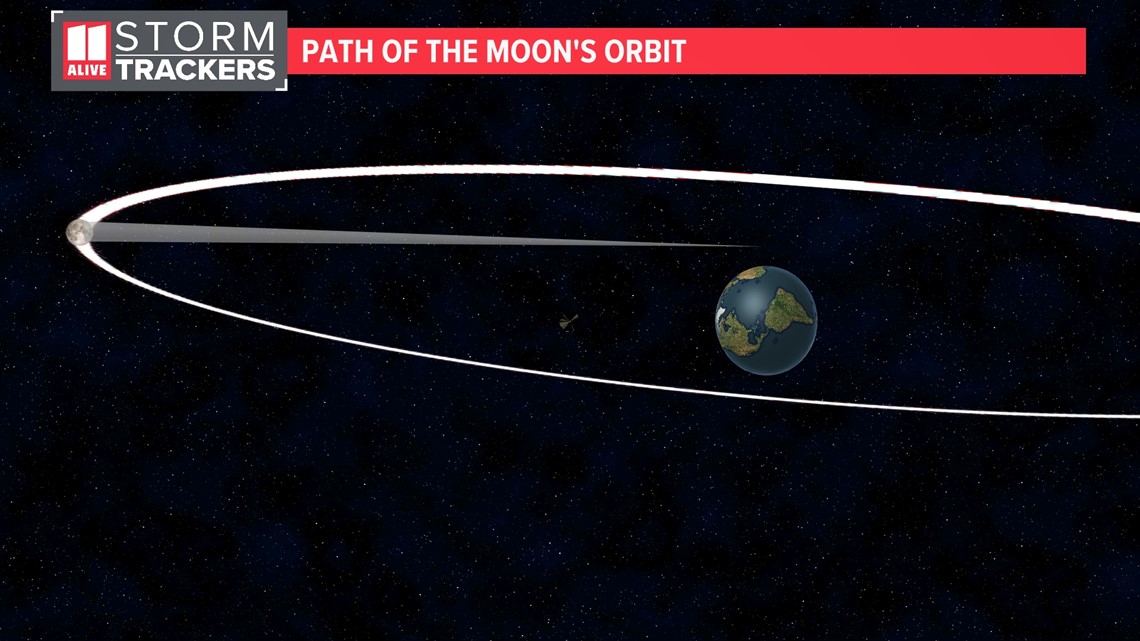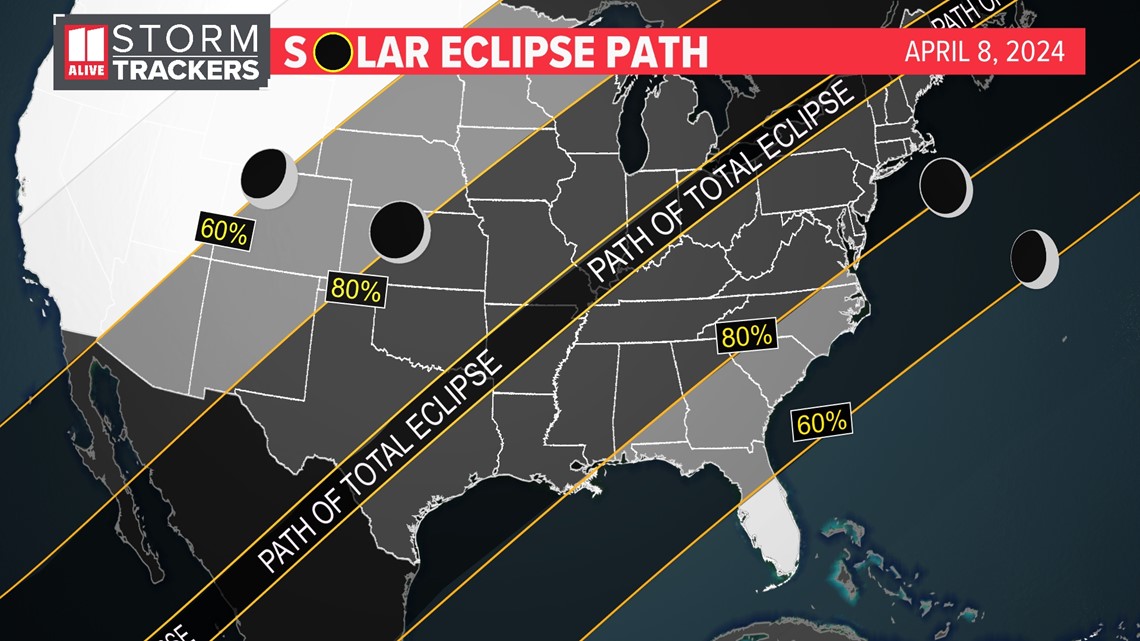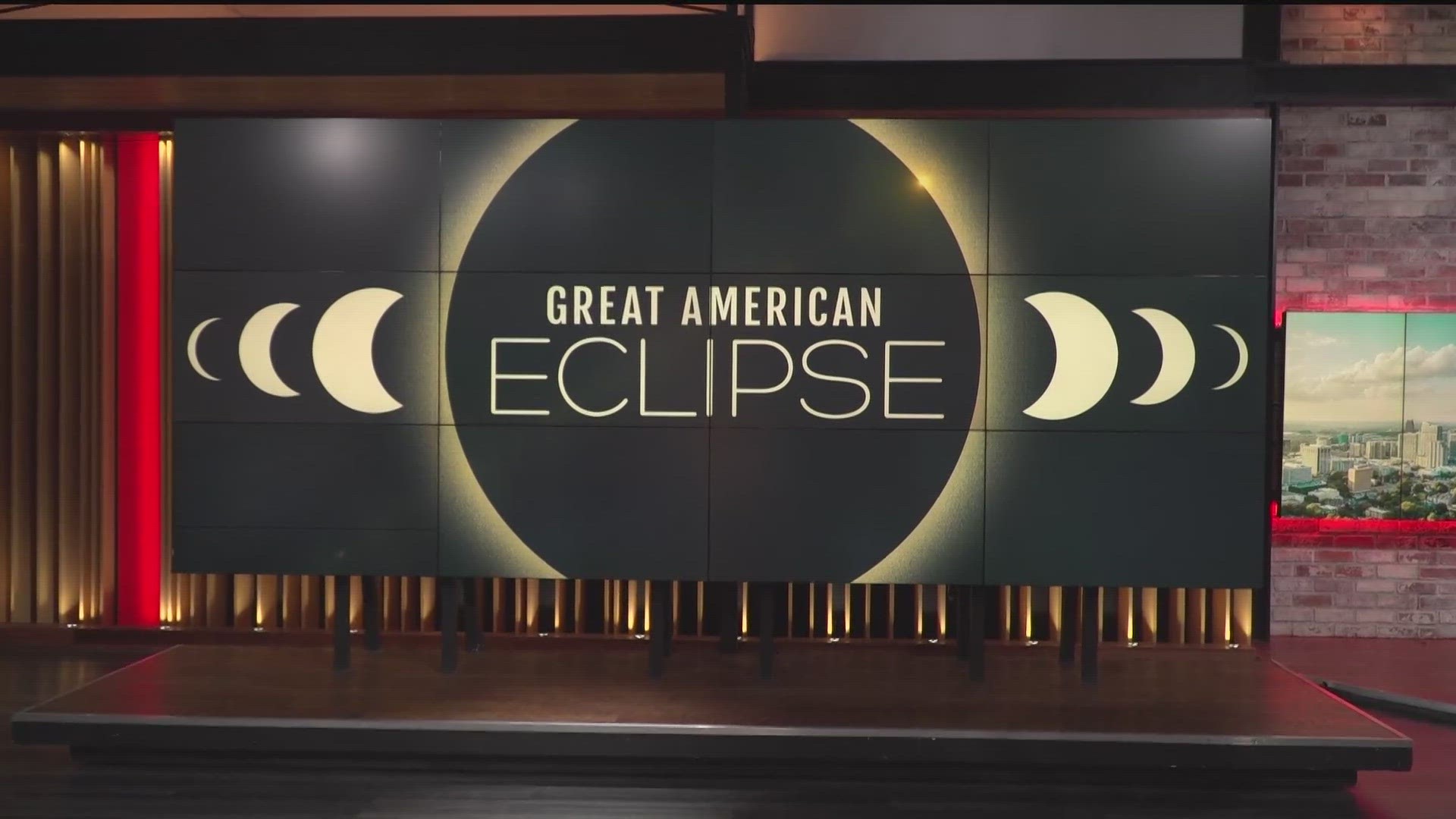ATLANTA — The upcoming total solar eclipse on April 8 is the first total eclipse visible in the continental United States since 2017. Before that, the last was in 1979, and we'll have to wait until August 2044 for another. Why don't they happen more frequently?
Solar eclipses occur when the moon passes between Earth and the Sun, casting the moon’s shadow on our planet.
RELATED: Places you can drive to from Atlanta that will be in the path of the 2024 total solar eclipse
If the moon’s orbit were a perfect circle, solar eclipses would happen every time the sun, moon and Earth aligned -- but that’s not the case. The moon’s orbit is tilted, so the shadow of the moon often passes above or below Earth.
Here's a visual example of what we mean:


On average, a total solar eclipse occurs somewhere on Earth every 18 months.
The tilt of the moon’s orbit and the earth’s rotation impact where an eclipse is visible. The path of the upcoming eclipse passes over more cities and densely populated areas than the 2017 eclipse did.


Moon's proximity to Earth
During this year's eclipse, the moon will be almost 8,000 miles closer to Earth than the 2017 event, so the path of totality will be wider. The path of totality will range from 108 to 122 miles wide on Monday compared to a 62 to 71-mile path of totality during the last total solar eclipse.
Thanks to the wider, more densely populated path, an estimated 31.6 million people live in the path of totality compared to 12 million in 2017.
Length of totality
Viewers of the total solar eclipse will experience a more prolonged period of darkness than in 2017. The totality of the solar eclipse lasts longer along the center of the path and for shorter periods closer to the edge of the path.
At its peak, the 2017 eclipse was in totality for two minutes and 42 seconds. There are a number of locations in the path of totality this year where totality will last more than four minutes.
More solar activity
The sun will also be more active during the upcoming solar eclipse. It's more likely viewers could see streamers along the corona or prominences which appear as pink curls coming off the sun.

